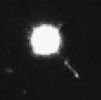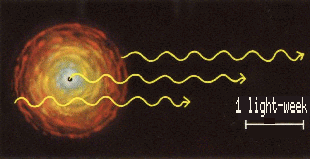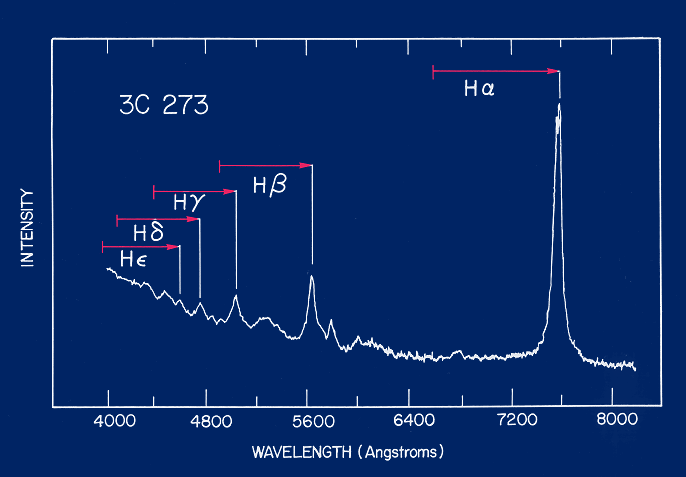Quasars and QSOs
 Quasi-Stellar Objects, QSOs, or quasars are believed to be the most distant and luminous objects in the Universe. Quasars were discovered in 1963 by radio telescopes. Observations of an occultation of 3C 273 by the moon showed that the position of the radio source was coincident with a 12th magnitude stellar object. Normal stars like the sun are known not to be strong radio sources. 3C273 and other similar "radio stars" were dubbed Quasi-Stellar Radio Sources soon shortened to quasar.
Quasi-Stellar Objects, QSOs, or quasars are believed to be the most distant and luminous objects in the Universe. Quasars were discovered in 1963 by radio telescopes. Observations of an occultation of 3C 273 by the moon showed that the position of the radio source was coincident with a 12th magnitude stellar object. Normal stars like the sun are known not to be strong radio sources. 3C273 and other similar "radio stars" were dubbed Quasi-Stellar Radio Sources soon shortened to quasar.
But 3C 273 was no normal star!
The first spectrum of 3C273 was obtained by Caltech's Maarten Schmidt using the Palomar 200" telescope. Schmidt puzzled over the photographic spectrum for months before he recognized that the strong, broad emission lines in the star were the familiar hydrogen-Balmer series, but redshifted by 15%. Later, deeper visible images showed a jet pointing away from this object (see images above).
It was not the 15% redshift that had puzzled Schmidt. Galaxies were already known with much larger redshifts. It was rather the brightness of 3C273. 3C273 was a thousand times brighter than even a very luminous galaxy would appear at the distance (2 billion light years) corresponding to the redshift of 15%. What was this monster!! Soon even higher redshift quasars were discovered.

The Energy Source of Quasars
The Energy Source of Quasars are extremely compact while being very luminous
(the luminosity of 100 galaxies). There small size is known because Quasars exhibit variability on timescales as little as hours. This means their enormous energy output originates in a very compact source. The timescale for light variability sets an upper limit on the size of the compact energy source. These limits are typically the size of the Solar System or smaller.
Strange connections
We now know Quasars belong to a much more diverse population of strange objects, collectively termed, Active Galaxies.
Redshifts are measured in percent shift of wavelengths. The most shifted spectrum so far seen? A quasar with a redshift, called 'z', of 6.4 was discovered in 2003. See the story and image Here.
